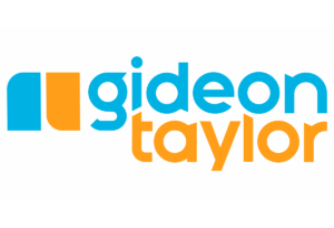Imagine a world where every software application you touch is powered by AI. It’s not just chatbots anymore. These days, AI is quietly woven into features across a variety of apps, often without us even realizing it. As this trend continues, it’s essential to understand how the AI in your software works, especially regarding the models it uses and how it handles your data.
You, ultimately, are the gatekeeper of your data’s safety. So, let’s arm you with the right questions to ask. For simplicity’s sake, we’ll focus on Large Language Models (LLMs) in this post. LLMs are becoming a staple in many applications, but they come at a cost—both financially and potentially in terms of data exposure. To offset the cost, most vendors are outsourcing these models, which means your data flows through these models as you interact with the software. But just how secure is it?
To answer that, let’s dive into the three most common ways LLMs are deployed today and what each means for your data security.
1. Shared Models on the Internet
Let’s start with the most common and cost-effective option today: shared LLMs accessible via a public API—like GPT-4. Here’s how it works: a software vendor integrates with a popular LLM API, which means every customer using that software is, in essence, sending data to the same endpoint.
While this setup is convenient, there’s a significant risk here. With countless vendors relying on the same model endpoint, it creates a prime target for malicious actors—a virtual honey pot. If this single-point-of-failure is compromised, all customers using the model are at risk. Even if your software vendor is secure, they’re one of many parties accessing this shared model, each potentially representing an entry point for an attack.
Lesson learned: cheap can be expensive. Know what your risks are when using publicly shared AI models.
Shared LLM models via public APIs can turn a cost-saving feature into a major risk. Know the trade-offs before you trust your data.
2. Shared Models Within Your Cloud Datacenter
For those looking to strike a balance between cost and security, many cloud providers offer LLM services accessible within their private cloud infrastructure. In this setup, the model (often open-source LLMs like Llama or Mistral) is shared among the cloud provider’s customers rather than the entire internet. Oracle, for example, also offers a partnership with Cohere to make LLMs available directly in their cloud environment.
With these models, you’re only sharing data within the cloud provider’s customer base, not with the wider world. Plus, this approach offers several security perks:
- Data Privacy and Control: Cloud providers are more likely to offer advanced data privacy settings, especially beneficial for organizations with regulatory requirements like GDPR or HIPAA.
- Private Access: Many clouds allow virtual private networks (VPNs) and private endpoints, avoiding the risks associated with sending data over the open internet.
- Lower Latency: Keeping everything within the same cloud environment can reduce latency, which is critical for certain real-time applications. Public APIs, in contrast, can introduce lag as data moves to external servers.
In short, while you’re still sharing the model, the pool of users is smaller, and there’s added security by staying within a private cloud setup.
3. Dedicated LLM Models
At the top of the data security ladder, we have dedicated LLM models. This is, hands down, the most secure option—and, predictably, the most costly.
Dedicated LLMs mean all compute, memory, and storage resources are fully allocated to your organization. There’s no risk of “noisy neighbor” interference, and no other customers will be sharing the hardware. Industries with tight security and compliance requirements (think finance, healthcare, and government) will find this setup most beneficial for several reasons:
- Complete Isolation: Your data and processing resources aren’t shared with any other users, offering unmatched privacy and security.
- Dedicated Networking: Through private endpoints and networking resources, you can better secure sensitive data and keep it from crossing potentially vulnerable paths.
- Data Residency Control: If compliance with data residency laws is a concern, dedicated hardware lets you decide where data is processed and stored, keeping sensitive data from moving across borders.
Dedicated LLM models are the gold standard for data security. By keeping everything isolated, organizations can exercise the highest level of control and compliance—a necessity for some, and peace of mind for others.
For organizations handling highly sensitive data, dedicated LLM models are the best option for data security and regulatory compliance.
In Closing
Choosing the right LLM setup often boils down to cost versus control. If you’re in a regulated industry or handling highly sensitive data, there may not be much choice but to go the dedicated route. However, for others, balancing cost and security might lead to a shared model within a private cloud.
Whatever choice you make, always remember: ask your vendors about the model they’re using. The more you know, the better you can protect your data.






